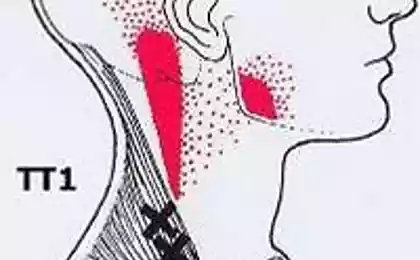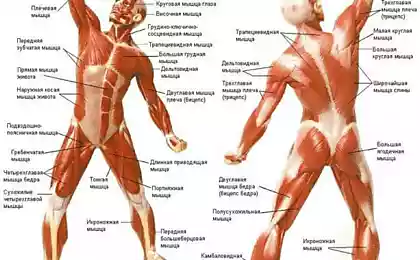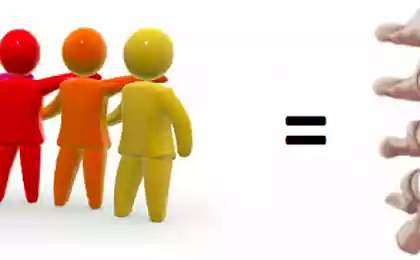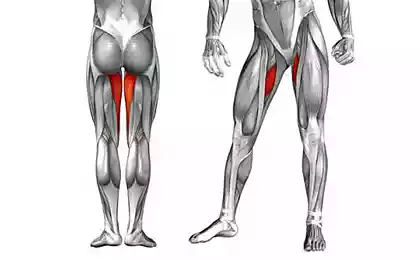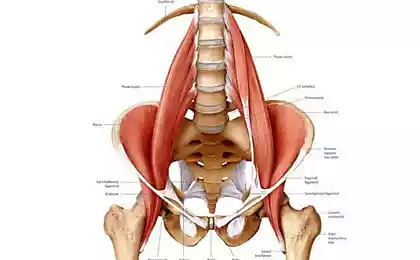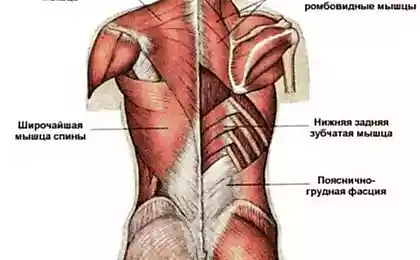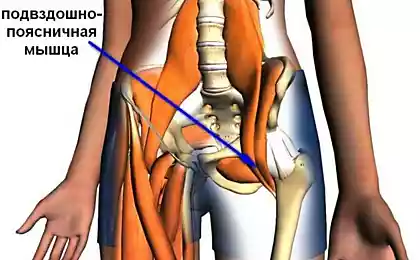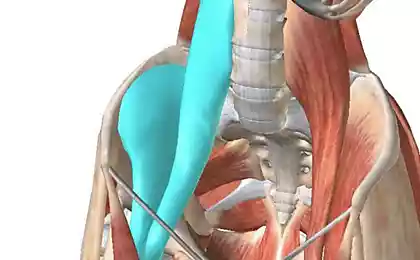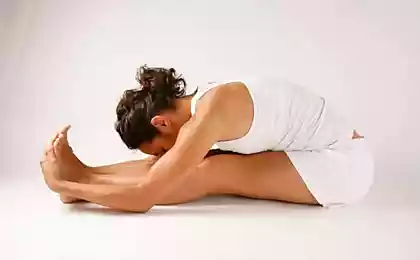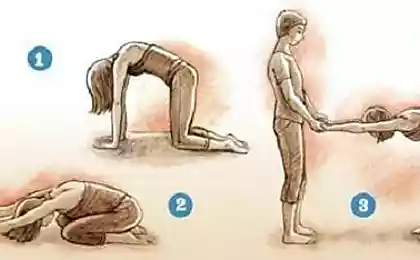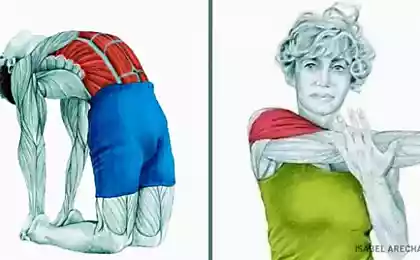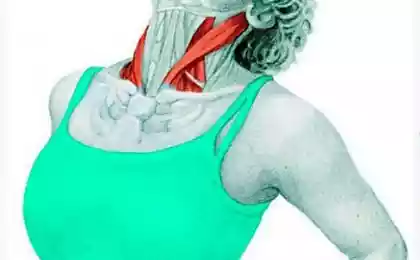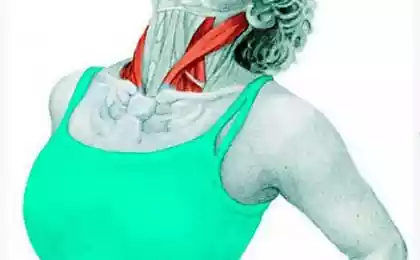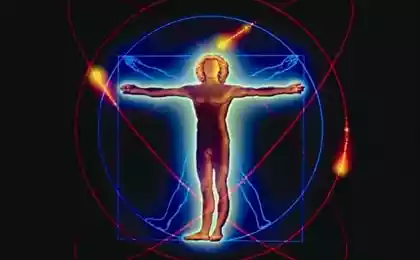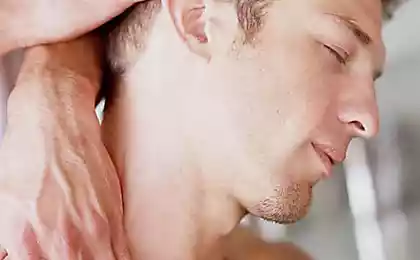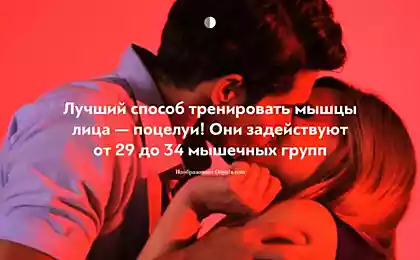254
Ode to transverse spinal muscle
The transverse spinal muscle follows along the entire spinal column and fills the depression between the spinal and transverse processes. This muscle has an oblique direction of relatively short muscle bundles that are thrown from the transverse processes of the underlying vertebrae to the bristle processes of the overlying ones.
Muscle bundles of cross-brush muscles have different lengths And when it comes to a different number of vertebrae, They form separate muscles: semi-laying, multi-separated and spinning muscles.
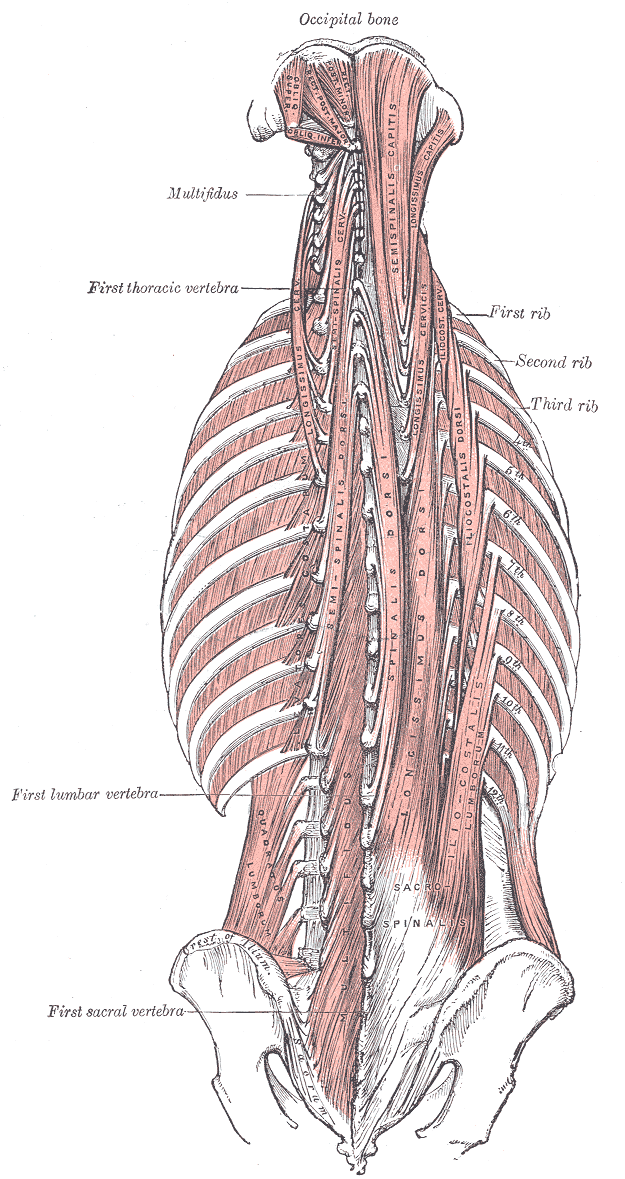
Each of these muscles is also divided into individual muscles, named for the location on the dorsal side of the trunk, neck and occipital region of the head. The transverse spinal muscle refers to the deep muscles of the back and represents their middle layer. The transverse spinal muscle is located inside the muscle that straightens the spine and is covered with it.
The surface layer of the transverse spinal muscle is the semicoupled muscle., the bundles of which are thrown through four or six vertebrae.
The cavity muscle has the appearance of long muscle bundles. By reducing all beams semi-spinal muscle extends the upper parts of the spinal column, pulls the head backwards, holding it in an upturned position. With unilateral reduction, there is a slight rotation.
It is distinguished by the head, neck and chest.
The cavity muscle of the head begins on the transverse processes of the six upper thoracic and articular processes of the four lower cervical vertebraeoutside the long muscles of the head and neck. This muscle is attached to the occipital bone between the upper and lower swelling lines.In the middle of the muscle is a tendon plate. The muscle behind is covered by the belt and longest muscles of the head.. Deeper and in front of the semi-spinal muscle of the head lies the semi-pinal muscle of the neck.
The place of the beginning of the cavity muscle of the neck are the transverse processes of the six upper thoracic vertebrae and the four lower vertebrae of the neck. This muscle is attached to the spinous processes of the V-II cervical vertebrae. Its bundles are thrown through 2-5 vertebrae.
The cavity muscle of the chest originates on the transverse processes of the six lower thoracic vertebrae It is attached to the spinous processes of the four upper thoracic and two lower cervical vertebrae. Each beam is thrown through 5-7 vertebrae.
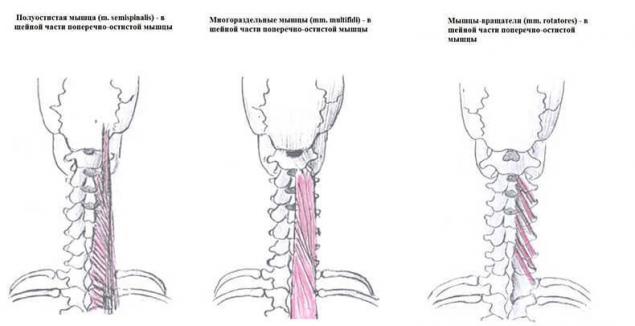
The middle layer of the transverse-brush muscles are multi-divided muscles, the bundles of which are thrown through two or four vertebrae.. Muscles begin on the transverse processes of the thoracic and lumbar vertebrae, the articular processes of the four lower cervical vertebrae and the posterior surface of the sacrum. The place of their fastening is the spiny processes of all cervical, except for the Atlanteans, thoracic and lumbar vertebrae..
Bundles of multisectional muscles are thrown through 2-4 vertebrae. They lie directly in front of the semi-spinal and longest muscles and are almost completely covered by the semi-spinal muscle. Multiple muscles turn the spinal column around its longitudinal axis, participate in the extension and tilt it to the side.
The deep layer of the transverse-brush muscle is made up of the spinning muscles. Their bundles connect adjacent vertebrae. These muscles are divided intoNeck rotators, chest rotators, lumbar rotators.
The starting points of all muscles are on all vertebrae except the Atlanteans. Throwing through one vertebra, the spinning muscles are attached to the spinous processes of the overlying vertebrae, as well as to the adjacent parts of their arcs. Muscles-rotators are better developed in the cervical and lumbar parts of the spinal column, which are characterized by the greatest mobility.
Poor vision: 10 reasons that doctors will not tell you
10 Best Exercises for Hip Health
In the thoracic spine, these muscles are weakly expressed or may be absent. Muscles - rotators rotate the spinal column around its longitudinal axis. Accordingly, the length of the bundles of the muscles-rotators are divided into long and short. Long rotational muscles They start from the transverse processes and attach to the bases of the spinous processes of the overlying vertebrae, throwing over one vertebra. Short spinning muscles. They are located between the neighboring vertebrae. published
P.S. And remember, just changing our consumption – together we change the world!
Source: vk.com/wall7285857?offset=6100&own=1&w=wall-55731291_766
Muscle bundles of cross-brush muscles have different lengths And when it comes to a different number of vertebrae, They form separate muscles: semi-laying, multi-separated and spinning muscles.

Each of these muscles is also divided into individual muscles, named for the location on the dorsal side of the trunk, neck and occipital region of the head. The transverse spinal muscle refers to the deep muscles of the back and represents their middle layer. The transverse spinal muscle is located inside the muscle that straightens the spine and is covered with it.
The surface layer of the transverse spinal muscle is the semicoupled muscle., the bundles of which are thrown through four or six vertebrae.
The cavity muscle has the appearance of long muscle bundles. By reducing all beams semi-spinal muscle extends the upper parts of the spinal column, pulls the head backwards, holding it in an upturned position. With unilateral reduction, there is a slight rotation.
It is distinguished by the head, neck and chest.
The cavity muscle of the head begins on the transverse processes of the six upper thoracic and articular processes of the four lower cervical vertebraeoutside the long muscles of the head and neck. This muscle is attached to the occipital bone between the upper and lower swelling lines.In the middle of the muscle is a tendon plate. The muscle behind is covered by the belt and longest muscles of the head.. Deeper and in front of the semi-spinal muscle of the head lies the semi-pinal muscle of the neck.
The place of the beginning of the cavity muscle of the neck are the transverse processes of the six upper thoracic vertebrae and the four lower vertebrae of the neck. This muscle is attached to the spinous processes of the V-II cervical vertebrae. Its bundles are thrown through 2-5 vertebrae.
The cavity muscle of the chest originates on the transverse processes of the six lower thoracic vertebrae It is attached to the spinous processes of the four upper thoracic and two lower cervical vertebrae. Each beam is thrown through 5-7 vertebrae.

The middle layer of the transverse-brush muscles are multi-divided muscles, the bundles of which are thrown through two or four vertebrae.. Muscles begin on the transverse processes of the thoracic and lumbar vertebrae, the articular processes of the four lower cervical vertebrae and the posterior surface of the sacrum. The place of their fastening is the spiny processes of all cervical, except for the Atlanteans, thoracic and lumbar vertebrae..
Bundles of multisectional muscles are thrown through 2-4 vertebrae. They lie directly in front of the semi-spinal and longest muscles and are almost completely covered by the semi-spinal muscle. Multiple muscles turn the spinal column around its longitudinal axis, participate in the extension and tilt it to the side.
The deep layer of the transverse-brush muscle is made up of the spinning muscles. Their bundles connect adjacent vertebrae. These muscles are divided intoNeck rotators, chest rotators, lumbar rotators.
The starting points of all muscles are on all vertebrae except the Atlanteans. Throwing through one vertebra, the spinning muscles are attached to the spinous processes of the overlying vertebrae, as well as to the adjacent parts of their arcs. Muscles-rotators are better developed in the cervical and lumbar parts of the spinal column, which are characterized by the greatest mobility.
Poor vision: 10 reasons that doctors will not tell you
10 Best Exercises for Hip Health
In the thoracic spine, these muscles are weakly expressed or may be absent. Muscles - rotators rotate the spinal column around its longitudinal axis. Accordingly, the length of the bundles of the muscles-rotators are divided into long and short. Long rotational muscles They start from the transverse processes and attach to the bases of the spinous processes of the overlying vertebrae, throwing over one vertebra. Short spinning muscles. They are located between the neighboring vertebrae. published
P.S. And remember, just changing our consumption – together we change the world!
Source: vk.com/wall7285857?offset=6100&own=1&w=wall-55731291_766
